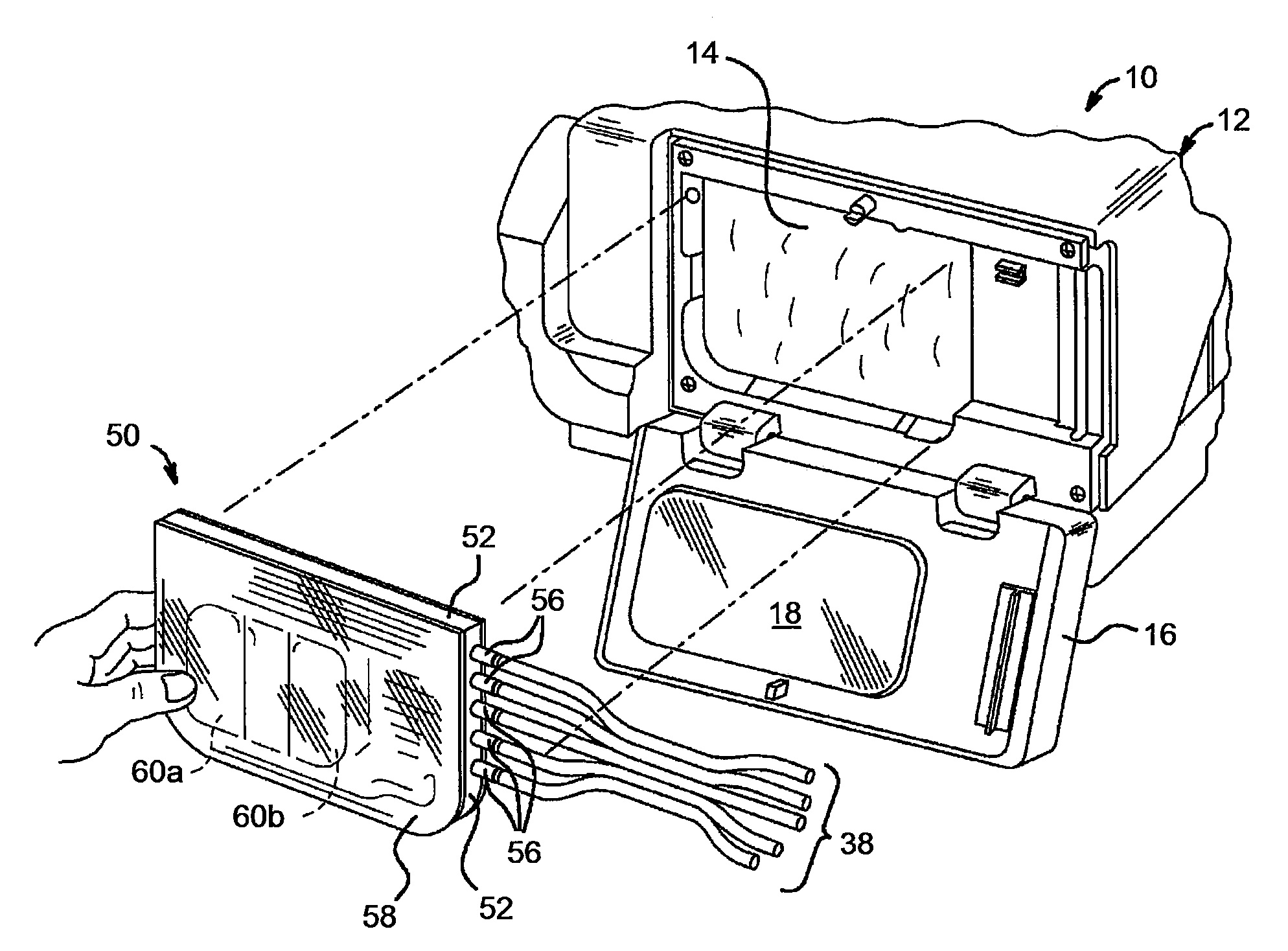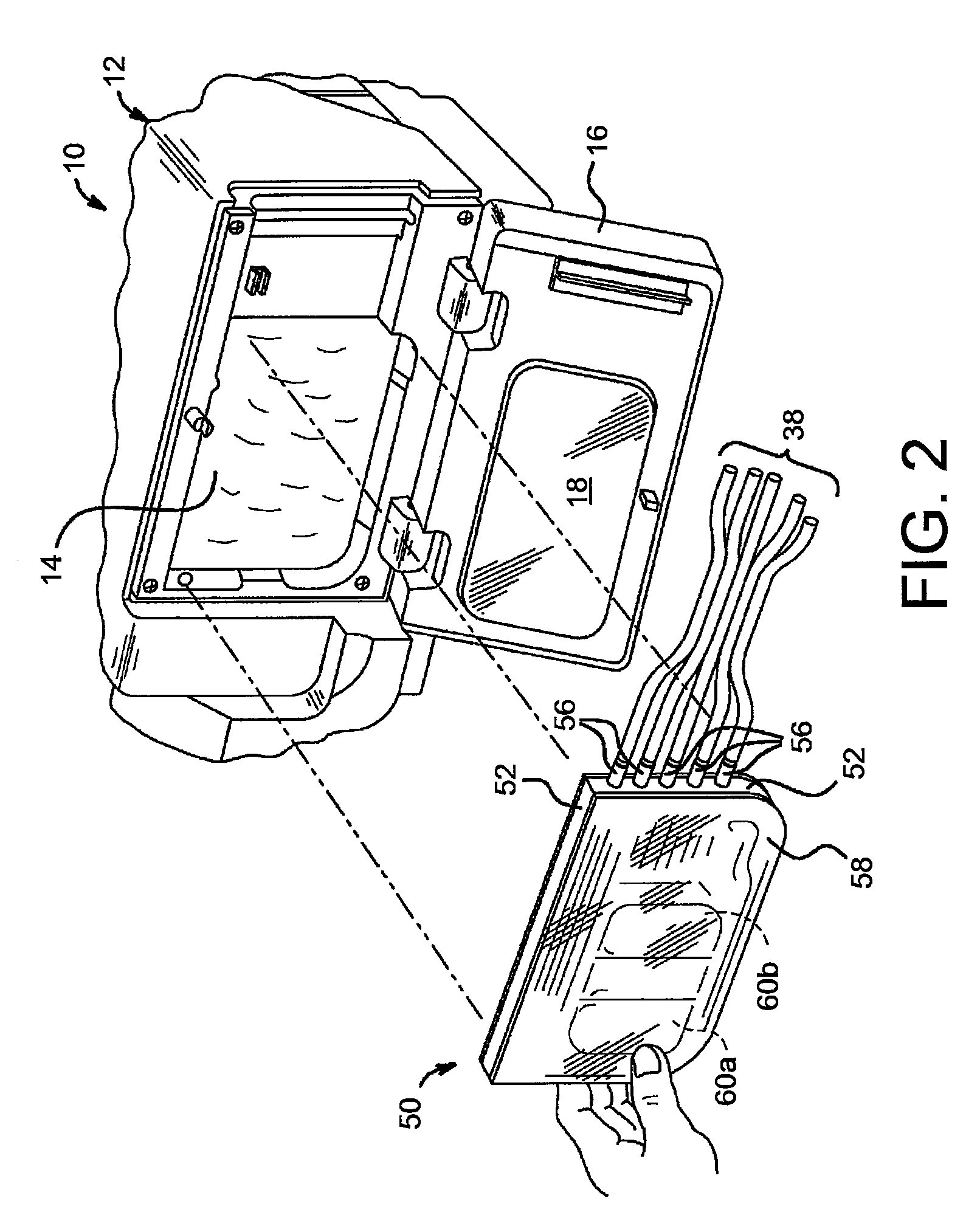Drain and fill logic for automated peritoneal dialysis
a technology of automatic peritoneal dialysis and drain and fill logic, which is applied in the field of peritoneal dialysis, can solve the problems of patient susceptible to incomplete drain, patient awakened, unwound, etc., and achieve the effect of limiting patient overfilling and limiting low drain alarms
- Summary
- Abstract
- Description
- Claims
- Application Information
AI Technical Summary
Benefits of technology
Problems solved by technology
Method used
Image
Examples
Embodiment Construction
[0046]Referring now to the drawings and in particular to FIGS. 1 to 2, a renal failure therapy system 10 is provided. System 10 is applicable generally to any type of automated peritoneal dialysis (“APD”) system. System 10 in the illustrated embodiment includes a dialysis instrument 12. Dialysis instrument 12 is configured for the type of APD therapy system provided. Dialysis instrument 12 includes a central processing unit (“CPU”) and memory, and may include one or more additional processor and memory (e.g., safety, valve, heater, pump, video and audio (e.g., voice guidance) controllers) operable with the CPU, the totality of which may be called a logic implementer. The logic implementer operates with a user interface (“UI”) such as a graphical user-machine interface (“GUI”), e.g., via a video controller component of the logic implementer. The GUI includes a video monitor 20 and one or more types of input devices 22, such as a touch screen or electromechani...
PUM
| Property | Measurement | Unit |
|---|---|---|
| volume | aaaaa | aaaaa |
| volume | aaaaa | aaaaa |
| volume | aaaaa | aaaaa |
Abstract
Description
Claims
Application Information
 Login to View More
Login to View More - R&D
- Intellectual Property
- Life Sciences
- Materials
- Tech Scout
- Unparalleled Data Quality
- Higher Quality Content
- 60% Fewer Hallucinations
Browse by: Latest US Patents, China's latest patents, Technical Efficacy Thesaurus, Application Domain, Technology Topic, Popular Technical Reports.
© 2025 PatSnap. All rights reserved.Legal|Privacy policy|Modern Slavery Act Transparency Statement|Sitemap|About US| Contact US: help@patsnap.com



